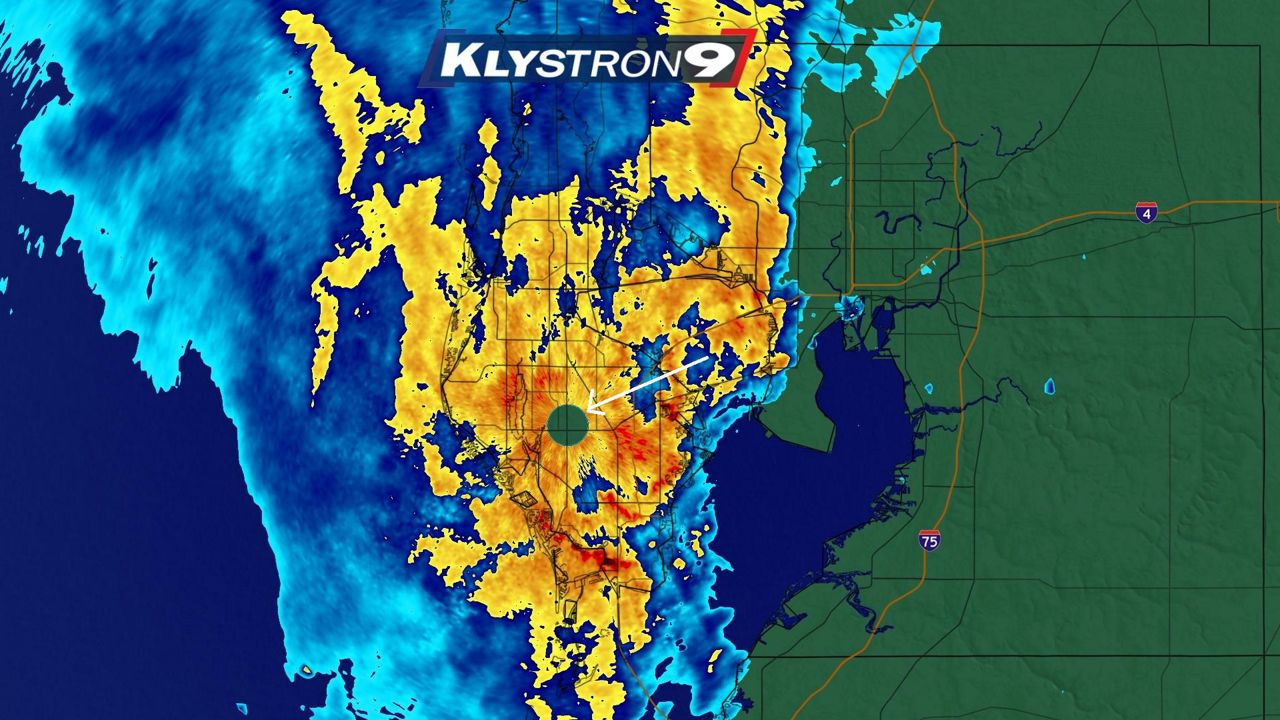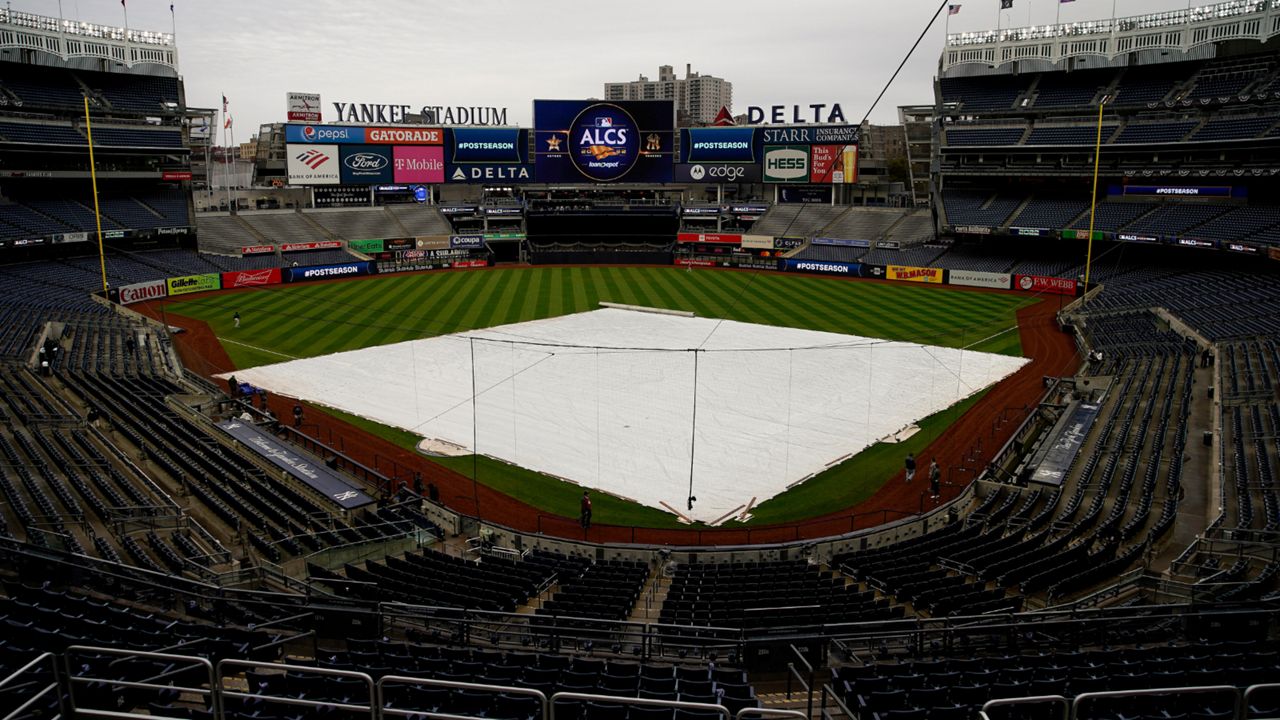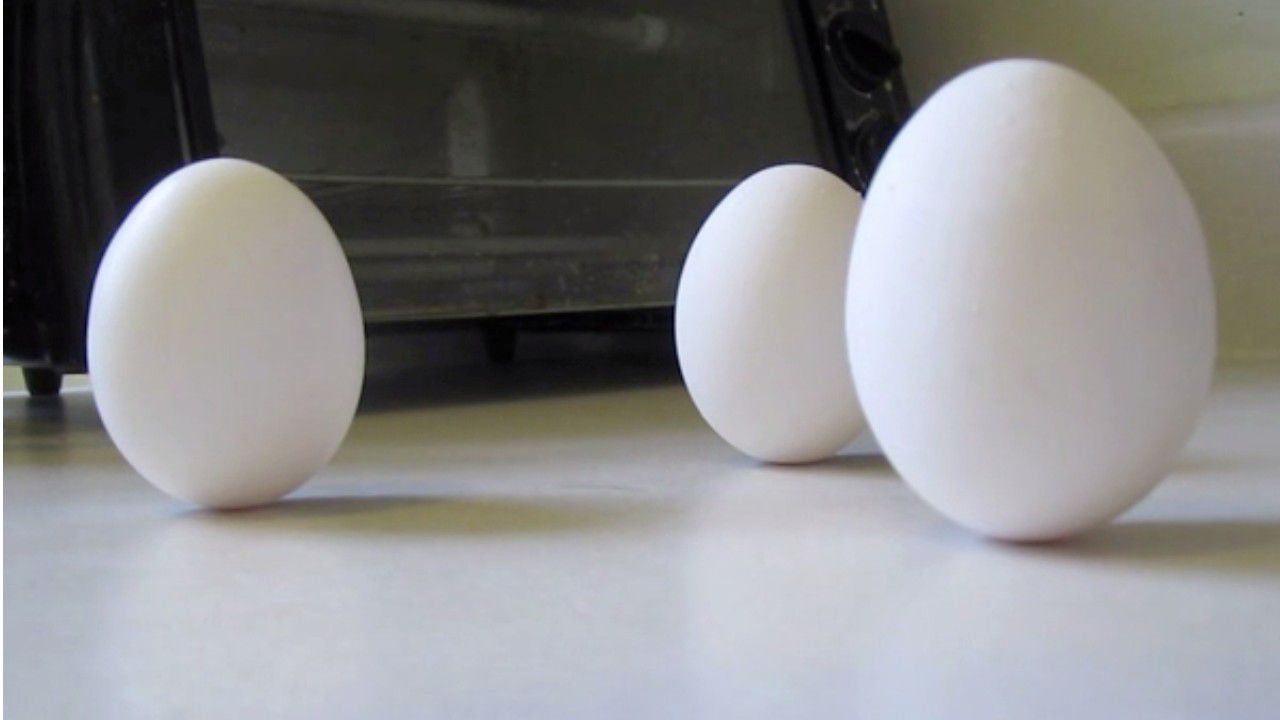Have you ever wondered why there is that small spot at the center of our Klystron 9 radar that is always blank?
There's a good scientific reason all weather radars have this blank space.
What You Need To Know
- Weather radars transmit electromagnetic waves
- Think of this as the weather radar talking, then listening for a response
- These waves move at the speed of light
As our Klystron 9 radar antenna turns, it sends out short bursts of radio waves we call "pulses." These pulses move through the atmosphere at the speed of light.
If those pulses contact a target, they return a signal to Klystron 9 that tells us with information about that target. It'll say how large the object is, which direction it's moving and how fast it's moving.
This is how we relay information to you about what's happening in the clouds above us.
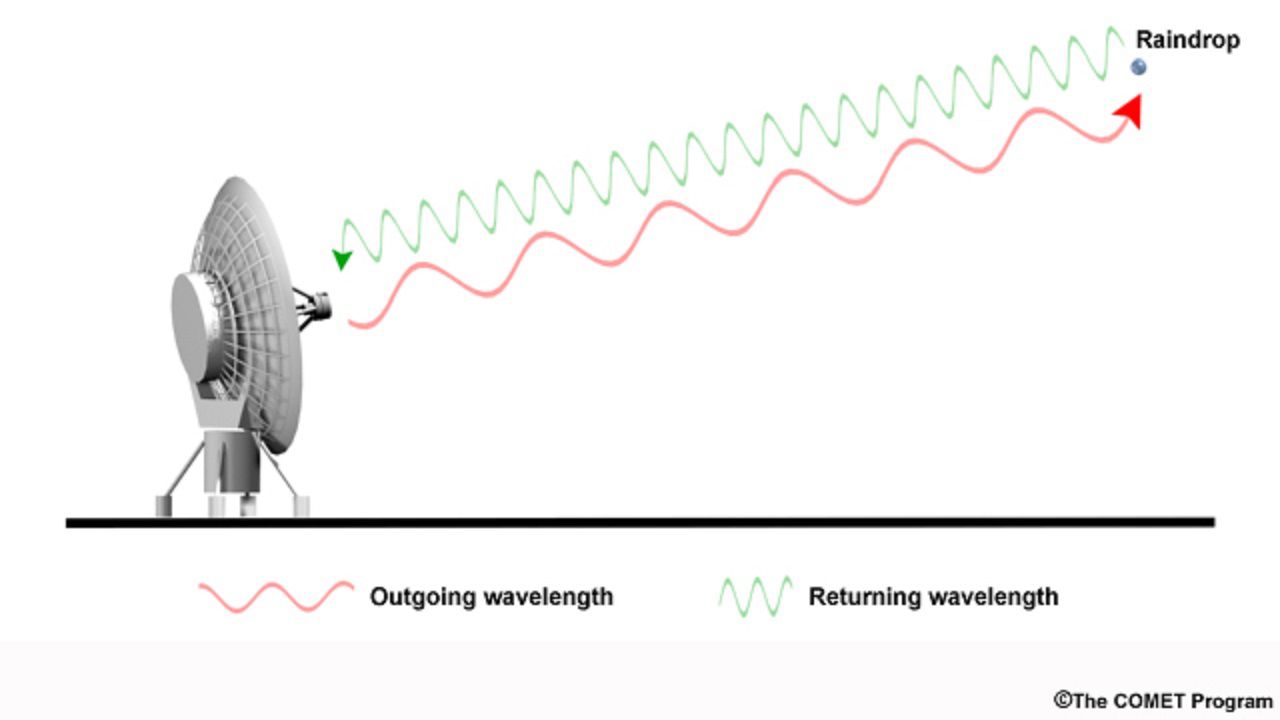
Think of this as the radar yelling into the atmosphere and waiting for a response if it hits something. A weather radar actually spends most of its time listening and very little time sending a signal.
The time between when our radar sends the signal and starts to listen happens extremely quickly. But since the signal is being sent out at the speed of light, there is a small gap before the radar can start listening. It's a very fast switch, but it takes about seven microseconds.
The speed of light is 670,616,629 mph. That's fast! This is the part where we do a little math. We know speed is distance divided by time. Since we know the speed and the time, we can solve for distance.
When we do this, we determine the signal has traveled 1.3 miles before making that switch to "listening mode." Sure enough, that blank space around the radar measures 1.3 miles from the center.
It's basic but fascinating science.
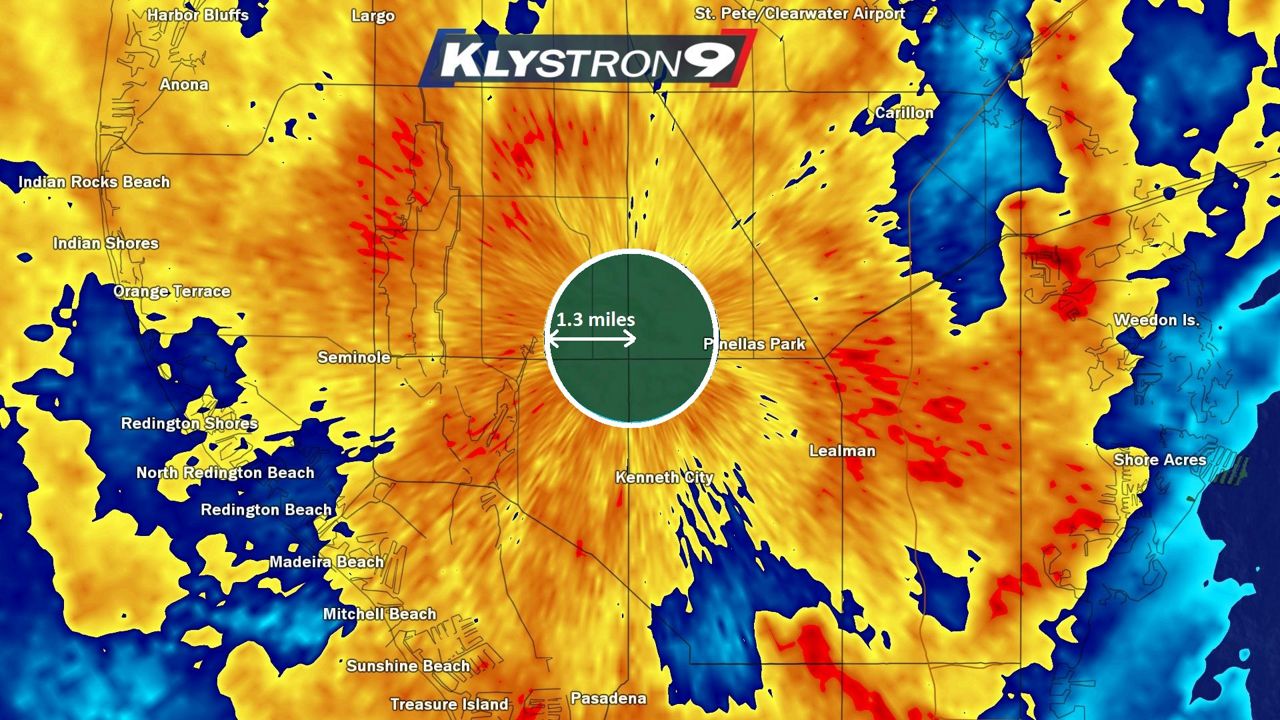
And if you're wondering how we see rain inside that small blank area... we simply use other radars. We have access to National Weather Service radars, as well as the terminal weather radar at MacDill AFB. So, if we want to see a storm directly over our radar, we use their radar. When rain is over their radar, we use ours to fill in their blank spots.




